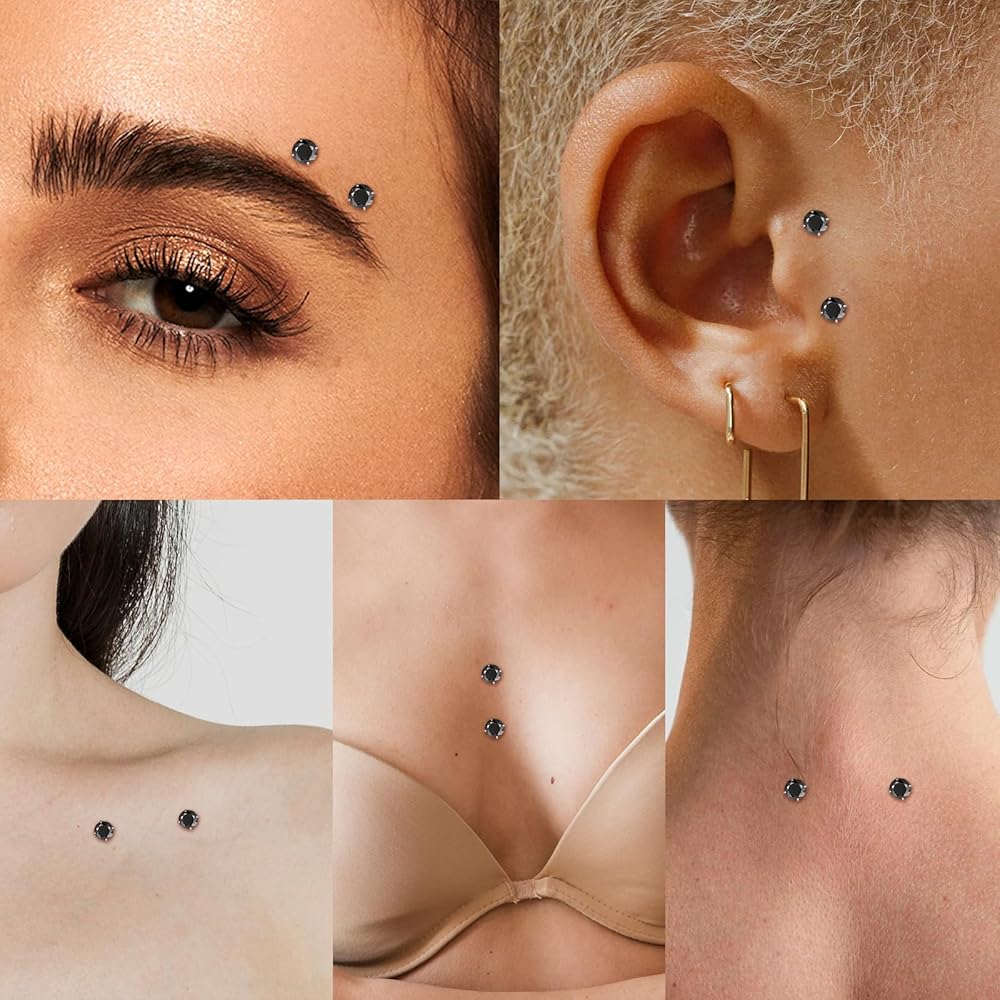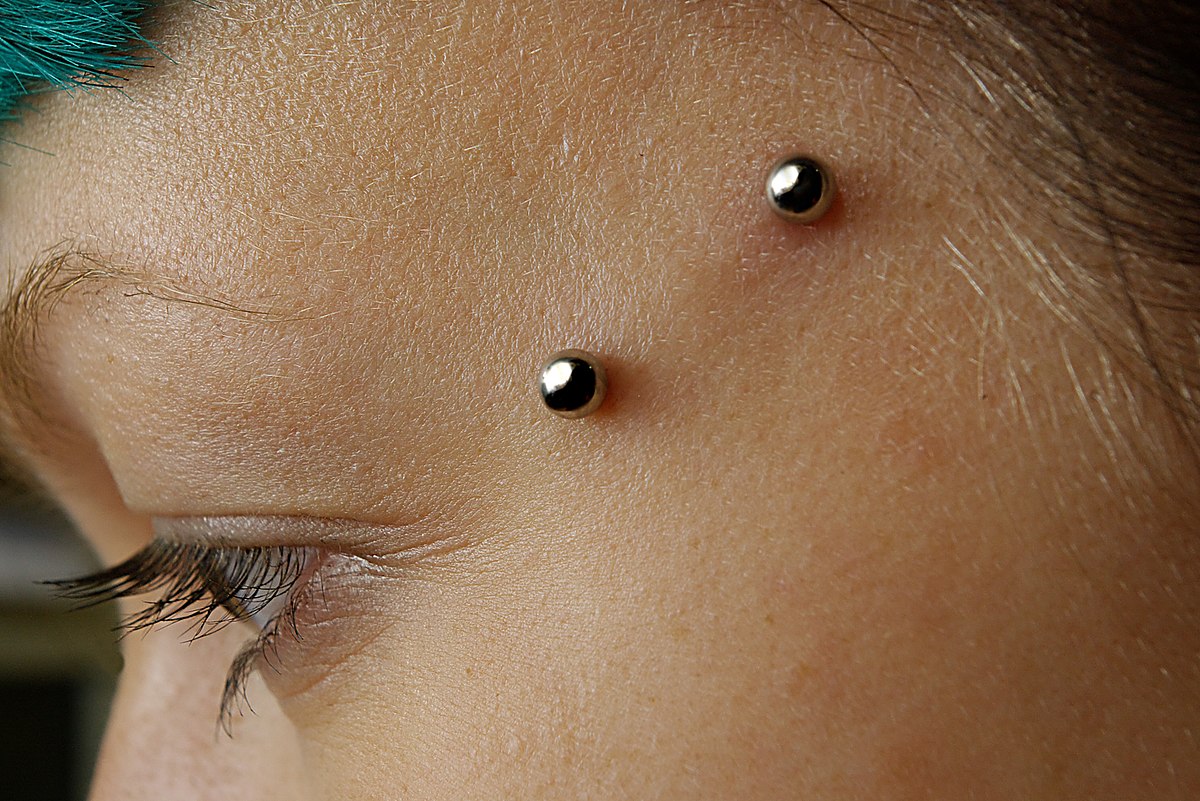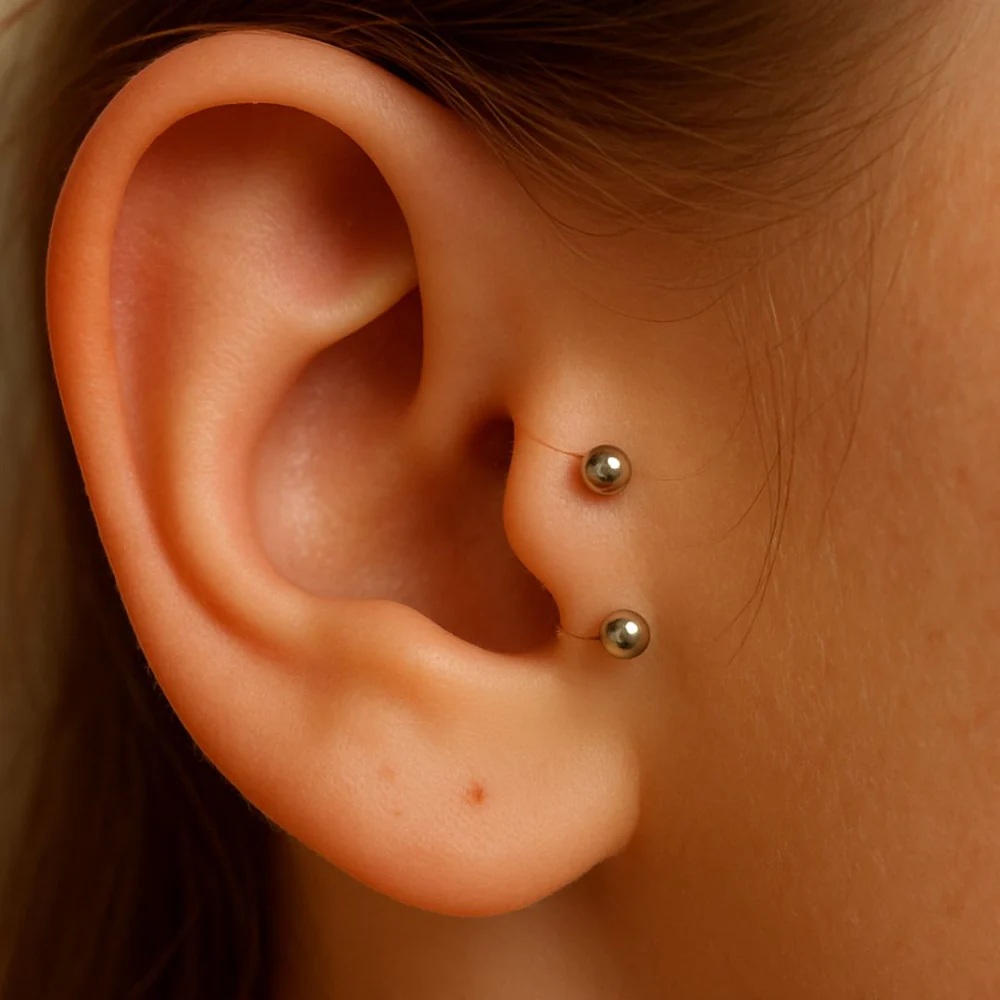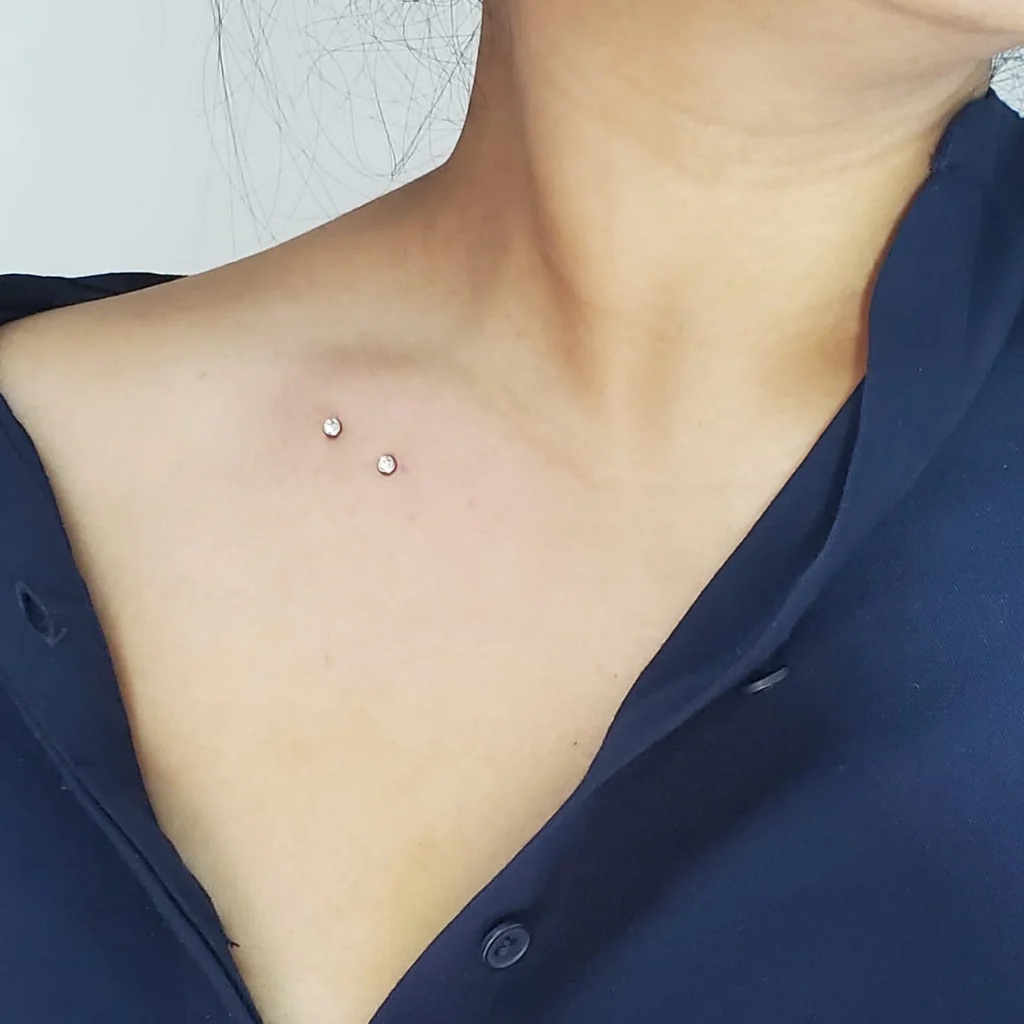For the true body art enthusiast, the skin offers a landscape of creative possibilities that extend far beyond traditional piercings. Surface and dermal piercings represent the pinnacle of advanced body adornment, allowing for jewellery to be placed on virtually any flat surface of the body, from the chest and nape of the neck to the hips and face. At Pink Tatpier, we are London’s trusted experts in these highly specialised procedures, combining deep anatomical knowledge with surgical precision to bring your unique vision to life.
These are not standard piercings. Their success is almost entirely dependent on the skill and experience of the piercer. Our role is to act as your expert consultant, guiding you through the process, providing an honest assessment of the risks and viability, and executing your custom project with an unparalleled level of care.
Discover the crucial difference between surface bars and dermal anchors, understand the realities of healing and longevity, get a quote for your custom project, and book a consultation with a true specialist.

Surface Piercing
Understanding Advanced Body Piercing: Surface Piercings vs. Dermal Anchors
Before planning your project, it’s essential to understand the two main techniques used for piercing flat surfaces of the body.
1. Surface Piercings (using Surface Bars)
- What They Are: A surface piercing uses a single piece of jewellery—a staple-shaped bar called a “surface bar”—that has two 90-degree posts rising from it. This bar is inserted beneath the skin, creating two visible piercing points on the surface that are connected by the bar underneath.
- How They Work: The 90-degree shape of the bar is crucial. It sits flat under the skin, minimising pressure on the tissue, which is essential for reducing the high risk of rejection associated with surface piercings. They are ideal for creating linear designs on flat areas like the nape of the neck (nape piercing), the sternum, above the eyebrow, or on the hips.
- The Look: Creates the appearance of two separate beads or gems on the surface of the skin.
2. Dermal Anchors (Microdermals / Surface Anchors)
- What They Are: A dermal anchor is a single-point piercing. It is composed of two parts: a small base or “anchor” that is inserted into the dermis layer of the skin, and a decorative, interchangeable top that is screwed into the anchor and sits flush with the surface.
- How They Work: Using a specialised technique with a needle or a dermal punch, a small “pocket” is created in the skin for the anchor to sit in. The surrounding tissue then heals around the anchor to hold it in place. This allows for piercings in places where a traditional piercing with an entry and exit point is impossible.
- The Look: Creates the appearance of a single gem or bead floating on the skin. They are perfect for creating intricate patterns, accents on tattoos, or for placements on the face, chest, and back.
The Unfiltered Truth: Risks & Longevity of Surface & Dermal Piercings
Our commitment to you is honesty. It is crucial to understand that both surface and dermal piercings come with a unique set of challenges and are not always permanent.

Surface Piercing
The High Risk of Rejection and Migration
This is the most important factor to consider. Due to their placement on flat, high-movement areas of the body, these piercings are under constant, subtle tension. The body’s natural healing process can sometimes identify them as foreign objects and will slowly push them out over time. For this reason, surface and dermal piercings should be considered long-term temporary piercings. Their lifespan can range from 6 months to several years, depending on placement, aftercare, and individual physiology.
The Danger of Snagging
Because they sit on the surface of the skin, these piercings are extremely prone to catching on clothing, towels, loofahs, seatbelts, and bags. A significant snag can not only be painful but can also easily tear the piercing, leading to rejection and scarring.
Why an Expert Piercer is Your Best Defence
While the risks are real, your chances of a successful, long-lasting piercing are dramatically increased by choosing a true specialist. An expert piercer at Pink Tatpier understands how to:
- Assess Anatomy: Choose a placement with minimal movement and tension.
- Use Correct Technique: Pierce to the precise depth required for the jewellery to sit properly.
- Select the Right Jewellery: Use only high-quality, implant-grade titanium surface bars and anchors.
The Procedure: A Look into Our Specialist Techniques
- Consultation & Viability Assessment: We discuss your desired custom project and assess the chosen area of your body to ensure the tissue is suitable.
- Precise Marking: We meticulously mark the placement to ensure perfect alignment and aesthetics.
- The Piercing Procedure: Depending on your choice:
- For Surface Piercings: We use forceps to lift the skin and a sterile needle to create a clean channel for the surface bar to be smoothly inserted.
- For Dermal Anchors: We use either a needle or a dermal punch to create a small, neat pocket in the skin for the anchor base to be securely placed.
- Jewellery Insertion & Aftercare: The jewellery is secured, and we provide a detailed aftercare plan tailored to the challenges of these specific piercings.

Surface Piercing
Surface & Dermal Piercing Cost in London (September 2025)
The price of these advanced piercings reflects the high level of skill and precision required.
| Service | Price (GBP) – Estimated | What’s Included |
| Surface Bar Piercing Fee | £60 – £75 | A specialist consultation, in-depth anatomy assessment, marking, sterile procedure, and a comprehensive aftercare guide. |
| Dermal Anchor Fee (per anchor) | £50 – £65 | Includes the full service. We offer a discount for multiple anchors performed in the same session. |
| Initial Jewellery | Starts from £25 – £30 | An implant-grade titanium surface bar or a dermal anchor with a basic top. |
| Total Starting Price (Dermal) | From £75 – £95 | The service fee + the cost of your chosen jewellery. |
The Best Jewellery for Surface & Dermal Piercings
For Surface Piercings
The only appropriate jewellery is a 90-degree surface bar made from implant-grade titanium. The length of the bar and the height of the posts are chosen by the piercer to perfectly match your anatomy.
For Dermal Anchors
The jewellery is a two-part system: the anchor base (under the skin) and the decorative top. For healing, it is crucial to use a low-profile, flat top (like a small disc or bezel-set gem) to minimise snagging. Once healed, you can explore a huge variety of decorative tops.
Professional Aftercare for Advanced Piercings
- DO clean the piercing GENTLY once or twice daily with a sterile saline solution. Do not over-clean.
- DO NOT cover the piercing with a plaster or band-aid for long periods. The skin needs to breathe to heal. You may use a small, breathable plaster for temporary protection in high-risk situations (e.g., during sport).
- BE EXTREMELY MINDFUL of your daily movements to avoid snagging. This is the most important part of aftercare.
- DO NOT attempt to change the dermal top yourself until the anchor is fully healed and settled (3+ months). Come back to us for your first change.
- MONITOR the piercing for signs of rejection (see FAQ below).

Surface Piercing
Frequently Asked Questions About Surface & Dermal Piercings
1. How long will my dermal or surface piercing actually last?
This is the most common question, and the honest answer is: it’s impossible to know for sure. With expert placement and perfect aftercare, some clients have kept theirs for many years. For others, it may only last 6 months to a year before it begins to migrate. You must be prepared for its potentially temporary nature.
2. What is the removal process like? Is it difficult?
Removal must be done by a professional piercer. For a surface bar, a small incision may be needed. For a dermal anchor, it is carefully massaged out or removed with a small tool. The process is quick but should never be attempted at home. A very small scar will usually remain.
3. Can you create patterns or shapes with multiple dermals?
Absolutely. This is where the artistry comes in. We can create beautiful “constellation” patterns, geometric shapes, or lines of multiple dermals. This is a custom project that requires a detailed consultation to plan and map out.
4. What are the signs of rejection?
Rejection is usually a slow, non-painful process. The primary signs are: the piercing becoming shallower over time (more of the bar becomes visible), the skin between the holes looking thin, red, and stretched, or the dermal anchor becoming loose and wobbly. If you see these signs, it’s time to have it professionally removed to minimise scarring.
Begin Your Custom Piercing Project with London’s Experts
Surface and dermal piercings are a beautiful and unique form of expression for the dedicated enthusiast. Their success hinges on the skill of the artist.

